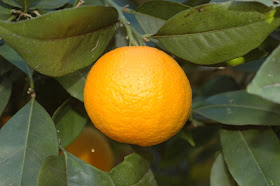Thursday, June 7, 2012
Fruit of the zesty kind
Another Citrus Festival was organised by the President of Malta last Sunday to raise funds for charity an event which also helps to highlight the importance of orange production in the Maltese islands.
Orange trees are not indigenous and do not grow wild in the Maltese countryside but in the past the orange was an important crop and many large groves could be found in the central parts of Malta and parts of Gozo.
Oranges have been cultivated in the Maltese islands for a very long time. Many varieties of oranges can nowadays be found in the Maltese islands but the best known is a local variety which produces ‘Maltese oranges’.
In the 19th century saplings of Maltese orange trees were exported in large numbers and nowadays Maltese oranges can be found growing in several Mediterranean countries as well as in other parts of the world including the United States of America where they are known by other names.
The orange tree, like other citrus fruit trees, is native to Southeast Asia and was probably planted around the Mediterranean by the Arabs during the ninth and tenth centuries. Christopher Columbus is said to have taken orange seeds with him to the New World and now Florida has become one of the main orange producers in the world.
Several other citrus fruits including a large number of varieties are cultivated in the Maltese islands but except for lemon trees they do not grow wild. The lemon is a hybrid tree that originated in Asia. It probably entered Europe through southern Italy sometime during the First Century AD.
It is widely cultivated in the Maltese islands and sometimes one finds solitary trees growing in the countryside.
These trees were probably planted by farmers but managed to survive without further help after the fields in which it was planted were abandoned.
The lemon has a variety of culinary and non-culinary uses. It is widely used in traditional medicine and whole books have been written about it. Lemon is a strong antiseptic and antibacterial and is a rich source of vitamin C and antioxidants.
This article was published in The Times on 25.01.12

No comments:
Post a Comment